The Premium Gerber Knife that Isn’t a Benchmade
The Sedulo is part of the first wave of Gerber’s Reserve series. It’s supposed to consist of US-made knives with high quality materials. It’s one of a handful of knives you can play with in Gerber’s Custom shop, which is a pretty cool thing if you have an hour and a hundred dollars to kill.
The Gerber Sedulo has made an odd impression with its yin yang mix of a cost-efficient FRN handle with a big slab of S30V for the blade. So this is a “premium” knife, but it doesn’t really feel premium. It feels like Gerber tried to make a premium knife, but couldn’t completely drag themselves away from their tough field knife mentality before it dropped another rustic folder on our heads.
The Sedulo has a couple premium parts, and the overall design does feel streamlined in a way that makes an odd combination with the feel of the handle. But it still has some of the failings of a knife made by a company that’s not quite used to pumping out super refined, high caliber knives.
Specifications
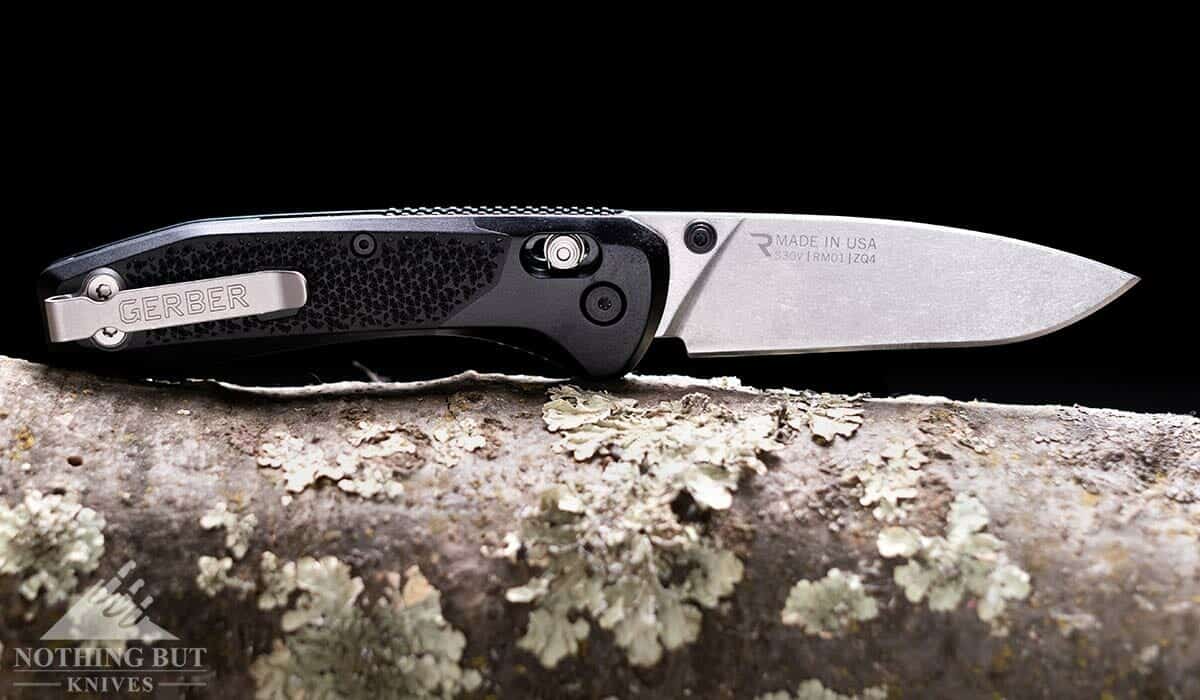
| Overall Length: | 8.0″ |
| Blade Length: | 3.5″ |
| Blade Width: | 3 mm |
| Blade Steel: | CPM S30V |
| Handle Length: | 4.5″ |
| Blade Shape: | Drop point |
| Blade Grind: | Flat |
| Handle Material: | FRN |
| Lock Type: | Slide |
| Weight: | 3.7 oz |
Pros
| Comfy, versatile handle |
| Lightweight and easy in the pocket |
| Easy to maintain |
| Fully ambidextrous |
Cons
| Wide, uneven grind makes for rough cutting |
| Hotspot from the pocket clip |
The Design is More Original than it Looks
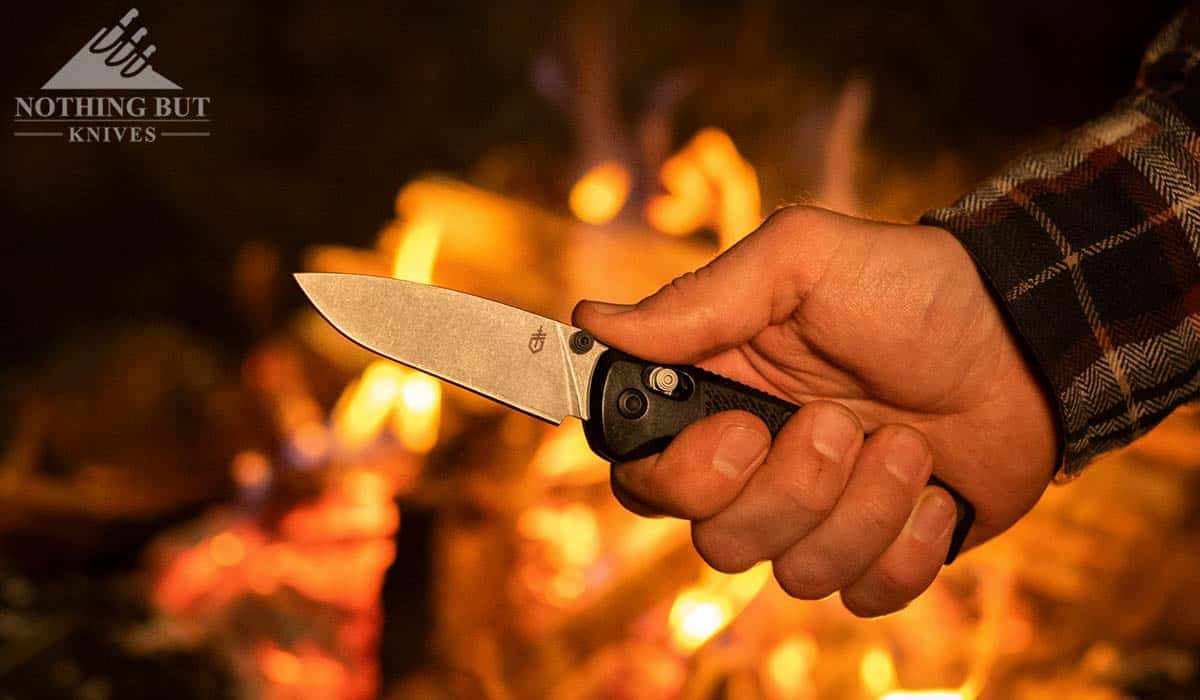
The first thing a lot of people have said about the Sedulo is that it’s suspiciously reminiscent of a few Benchmade designs. The new slide lock is the main culprit behind that comparison, but it’s hard to deny some of the lines on this knife come close to knives like the Bugout. That’s ignoring some of the interesting things Gerber has done with this design all on their own, though.
For Example: The Hardware
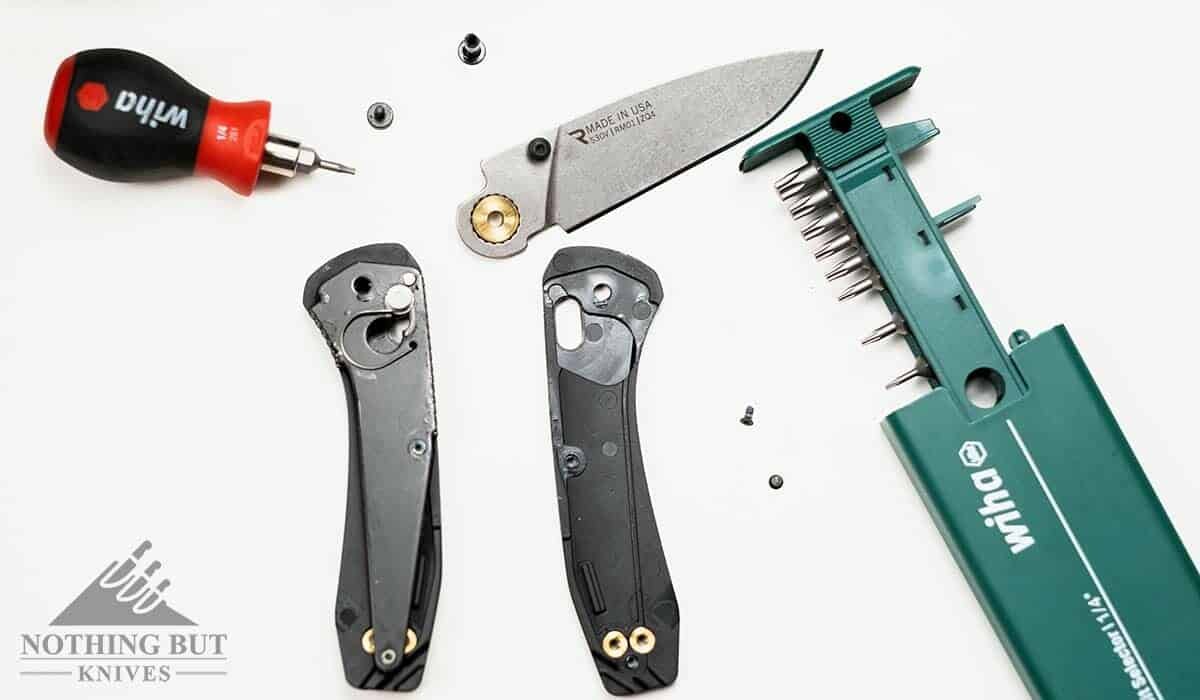
What’s probably the most interesting, is that the Sedulo doesn’t run on bronze washers. Or even washers at all. It runs on one big piece of bronze that goes through the whole tang of the blade. So in a way the “washers” are built into the knife. This is really nice for taking the knife apart, because the only loose part you end up with is the pivot screw. Unless of course you’re taking the handle apart as well, but since the handle is FRN, and the space is wide enough to run a Q-tip through without disassembling anything, I can’t really think of a reason you would ever need to go that far.
More Tough Inner Workings
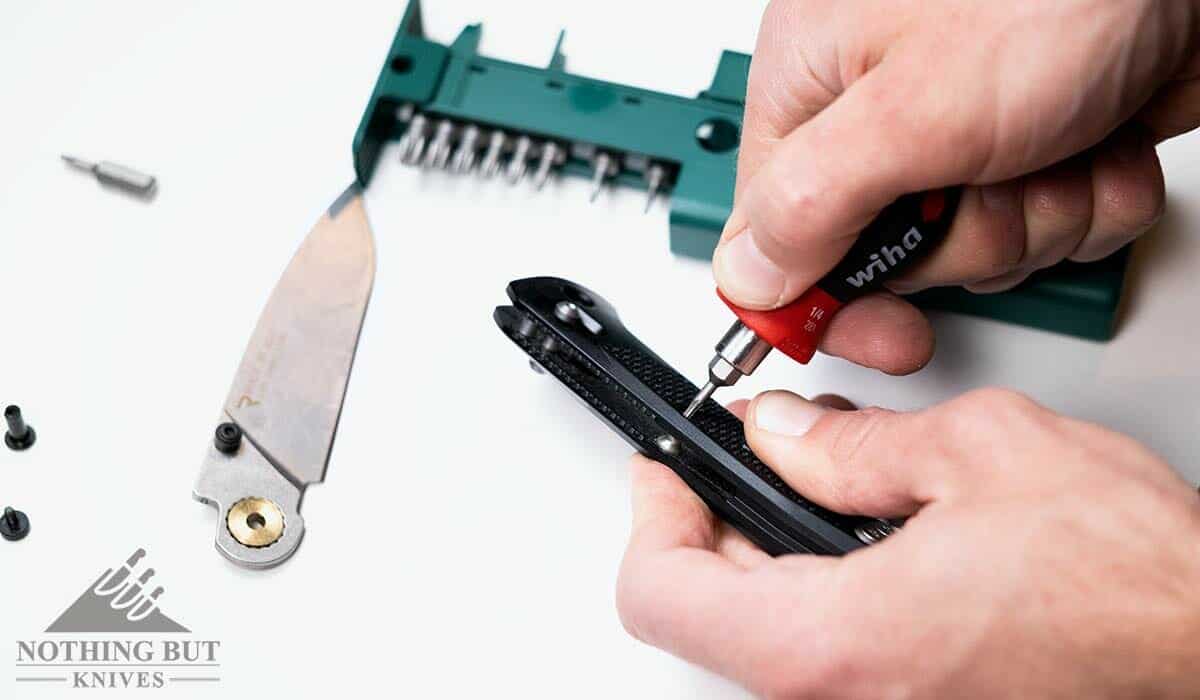
If you were to take the handle apart, though, you would see full liners. This is part of the reason the knife feels so well balanced even though the blade is so thick and the handle scales are basically weightless. It also means that all the screws holding the scales in place aren’t just sitting in plastic. They’re all screwing into some kind of metal or other internal feature.
I really like this for something that has turned out to be a hard-use knife because it adds so much reinforced structure to the handle. It really feels like all the little details of this design point toward this thing being made for abuse.
The Handle is Better than the Materials Suggest
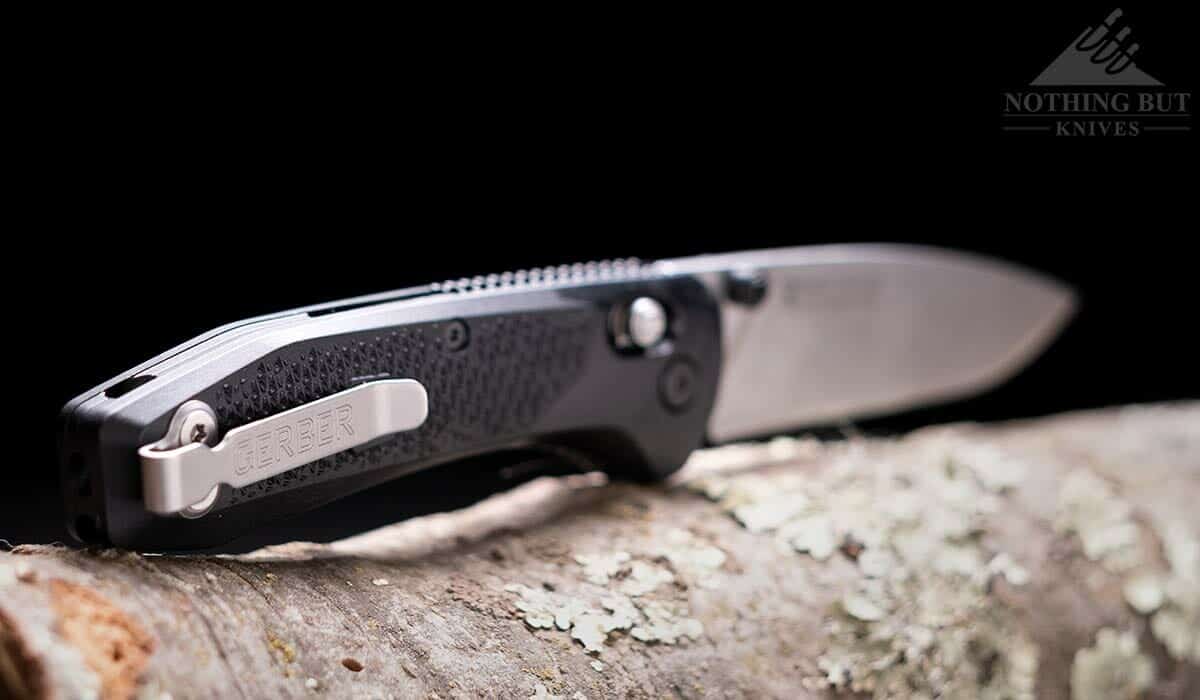
Good handles are something I’ve come to expect from Gerber ever since handling the Principle and the Flatiron. The Sedulo did not disappoint me.
The shape lends itself to an ease of use in a lot of different grips. In fact I’ve mostly used it in a reverse grip and chest levers. That’s partially because the edge makes it a little more difficult to do hard cuts in a standard grip, but that’s kind of a separate issue.
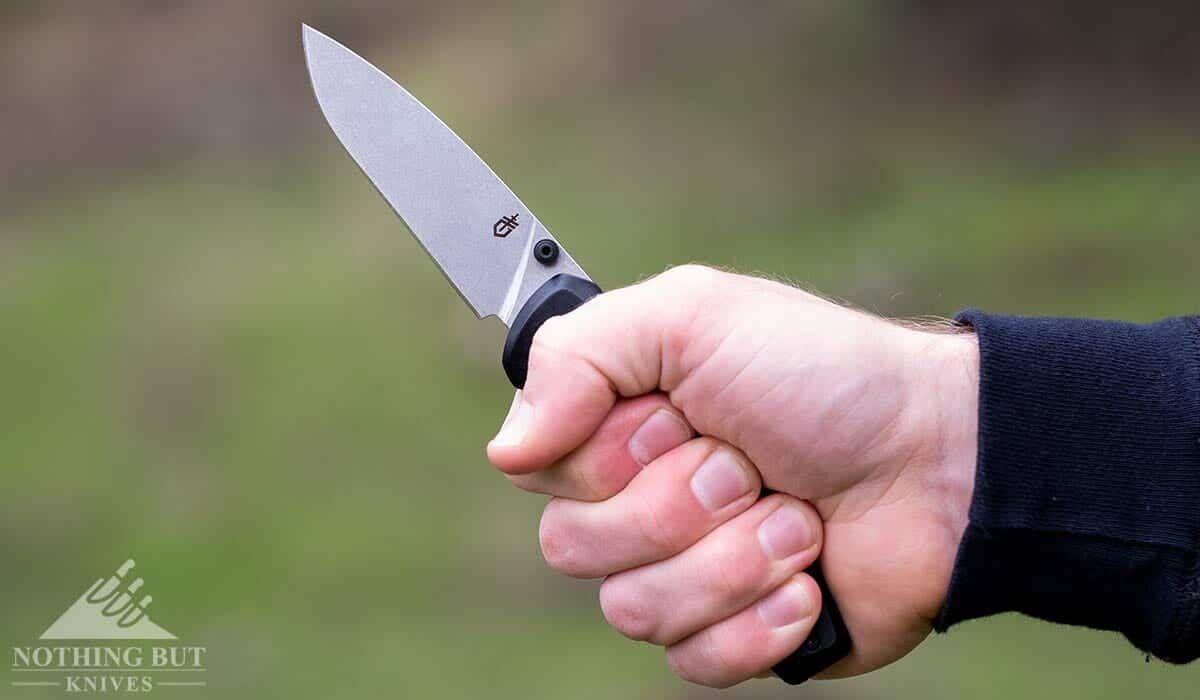
I’m not a huge fan of the plastic feeling of the handle material, but it’s comfortable and they’ve done a good job on making the texturing aggressive without actually feeling rough. The only issue I have with it is that I can feel the pocket clip jabbing my hand pretty hard whenever I tighten my grip. But I was expecting that just from looking at the way it curves up so severely.
On the FRN Scales
I’ve gone back and forth with myself about whether they should have used G-10 for this. For $100 it feels like it should have something a little more respectable, but I honestly like how they’ve worked this FRN well enough that I’m kind of okay with it.
This plays into an area that Gerber is pretty consistently good at: making cheap materials better than you expect they can be. That’s why there are so many people eating up their designs with 420HC steel. They know how to bring medium grade materials up into the “good” part of the spectrum.
They’re a clever company when it comes to this kind of thing. And unfortunately I think that plays into the reason they gummed things up a bit on the next element of the knife.
The Blade is the Achilles Heel
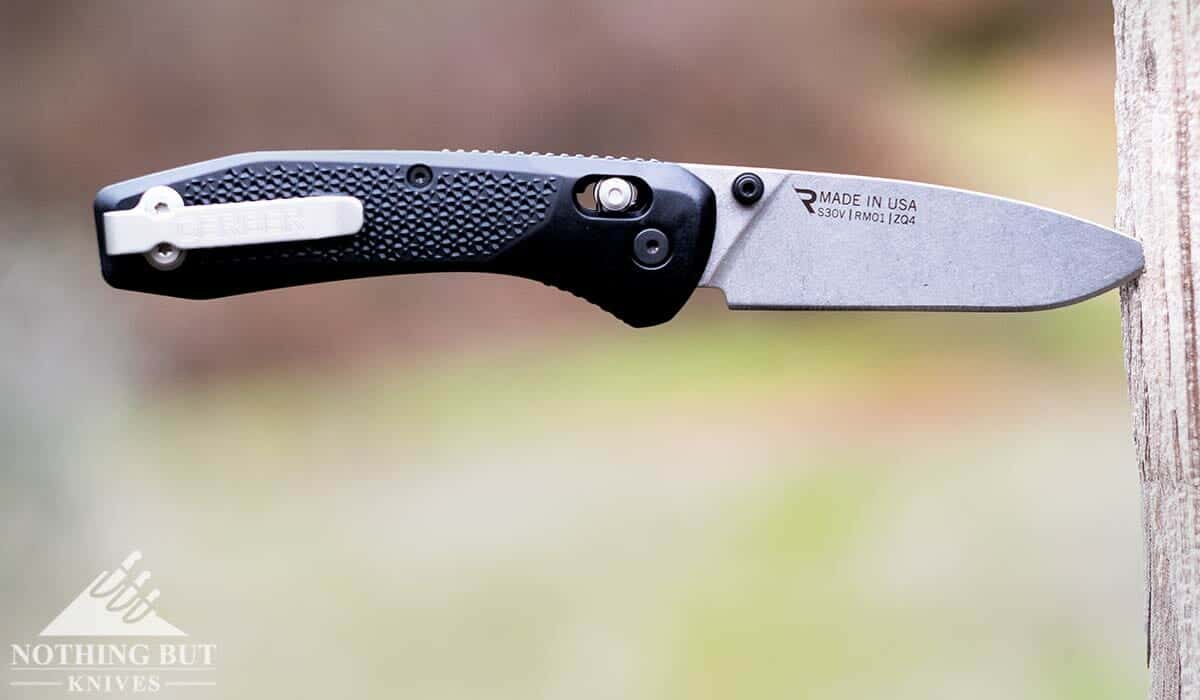
This is where the biggest flaw lies with the Sedulo.
It has a pretty thick grind, so it doesn’t have an especially fine-cutting edge right from the factory. It’s also not an especially even grind.
In fact, the edge all around is disappointing for a $100 knife. When I break down boxes with it, the edge has a tendency to tear rather than cut if I don’t get the blade aligned just right. And even then, the cut has a gritty feeling to it. I would probably be frustrated with the edge even if this was a $50 knife.
The Sloppy Cutting
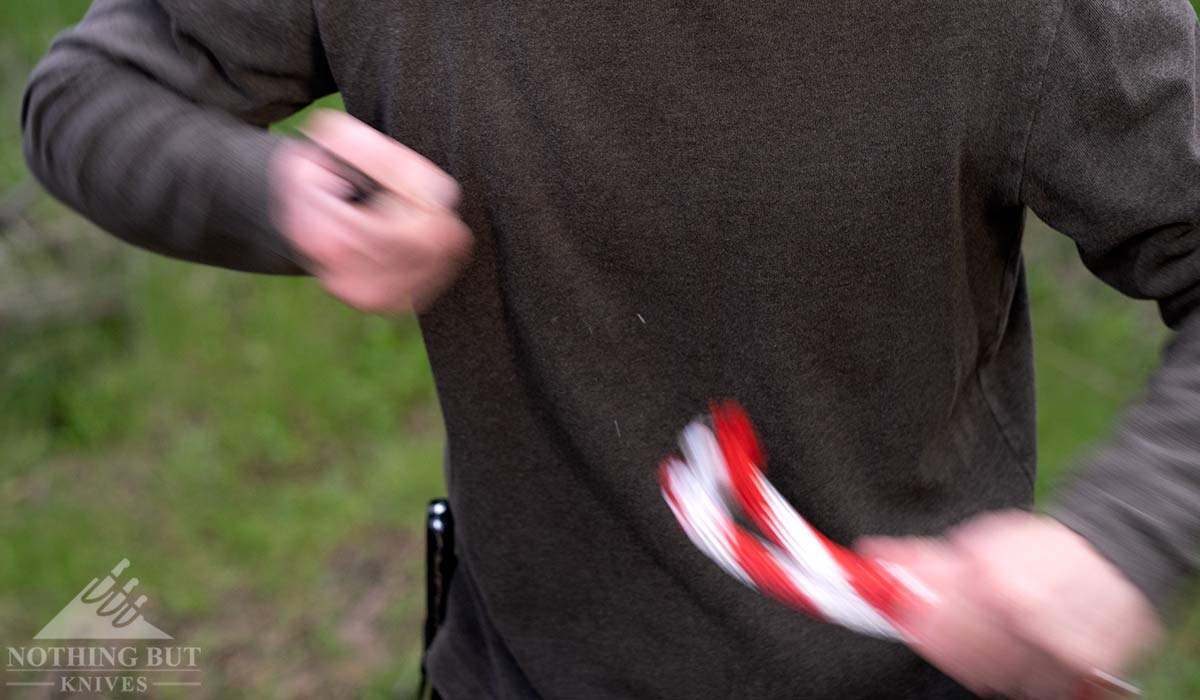
It was okay at cutting rope. Or at least, that was the most painless thing I cut with it. It has a way of cutting that reminds me a bit of the Kizer Sheepdog in that it has a feeling of slowly pushing materials apart rather than slicing them up quickly. That’s probably because those are both wide, full flat grinds.
The difference is that Kizer did a great job on the Sheepdog’s grind so that it works really well on things you weren’t expecting it to. The Sedulo has the look (and price) of an EDC that can excel at a lot of different tasks, but ends up being disappointing at pretty much everything. If the handle weren’t so easy to use in different grips I would have dropped this knife a long time ago, and this review would be a lot shorter.
As it is, I’ve needed to do a lot of chest lever cuts with this thing just to get enough force to get through things like rope and weedeater string, and that’s really not a great sign.
The Problem is the Premium Steel
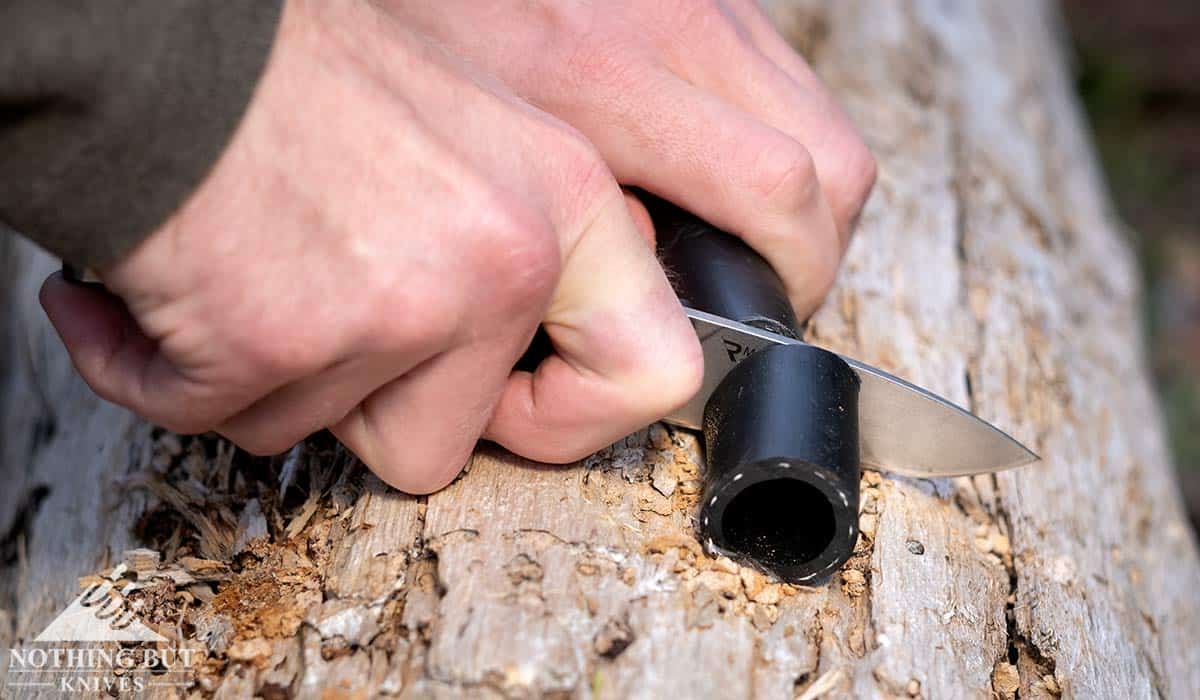
I’m pretty sure the uneven grind is partly to blame for the sloppy way the Sedulo cuts, but there’s no getting around the fact that this knife just plain needs to be sharper.
This wouldn’t be a huge problem if the blade wasn’t S30V steel and if I didn’t have a bunch of other knives lying around. Almost anything softer would be fairly easy to sharpen up, but since this is S30V and sharpening would take forever, and since I do have a tone of other knives lying around, it really isn’t worth the time and materials for me to get this blade into proper shape.
And it’s a shame too, but everything else about the knife is great. So much so that I would say it’s still worth getting if you’re willing to work on that blade yourself. But this also gets into the issue with Gerber and the kinds of materials they’re used to working with. Every Gerber knife I like is mostly made of rubber and 420HC steel. They’ve stepped out of their comfort zone with the Sedulo, and while I’m happy to see them branching out, it hurts to see that they still need to get things dialed in when dealing with harder steels.
Ergonomics and the Slide Lock
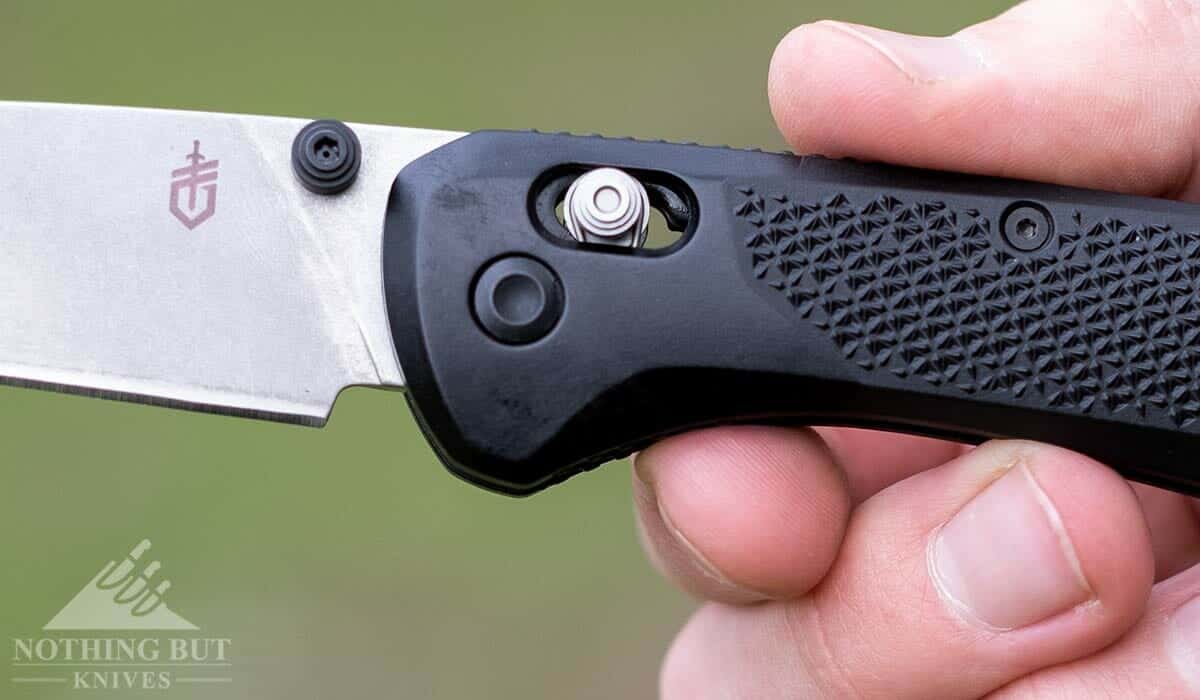
Back to the good stuff, the Sedulo has fairly smooth action and a nice fidget factor. I haven’t played with many knives with a slide lock, but after messing around with this for a while I get the hype about Benchmade’s Axis lock all those years.
That said, the action did feel just a little bit gummy at first. Fortunately, this thing is easy to take apart. It helps a lot to take the blade out, clean up the bronze pivot piece and add a little oil to it and the back of the blade tang where it rubs against the lock bar when being closed or opened. It only takes a couple minutes and it pretty much removes any rough spots in the action.
Easy in Gloves
This also turned out to be easy to use with thick gloves on. I was worried the thumb studs would be too deep off the handle or that I wouldn’t be able to grab onto the slide lock enough to disengage the blade. Fortunately Gerber made the grooves on both these parts aggressive enough to catch onto my gloves, so it turned out to be pretty easy. Everything from taking it out of the pocket to deploying and disengaging still feel easy with thick gloves on (still kind of sucks to cut stuff with, though).
The Quiet Lock Up
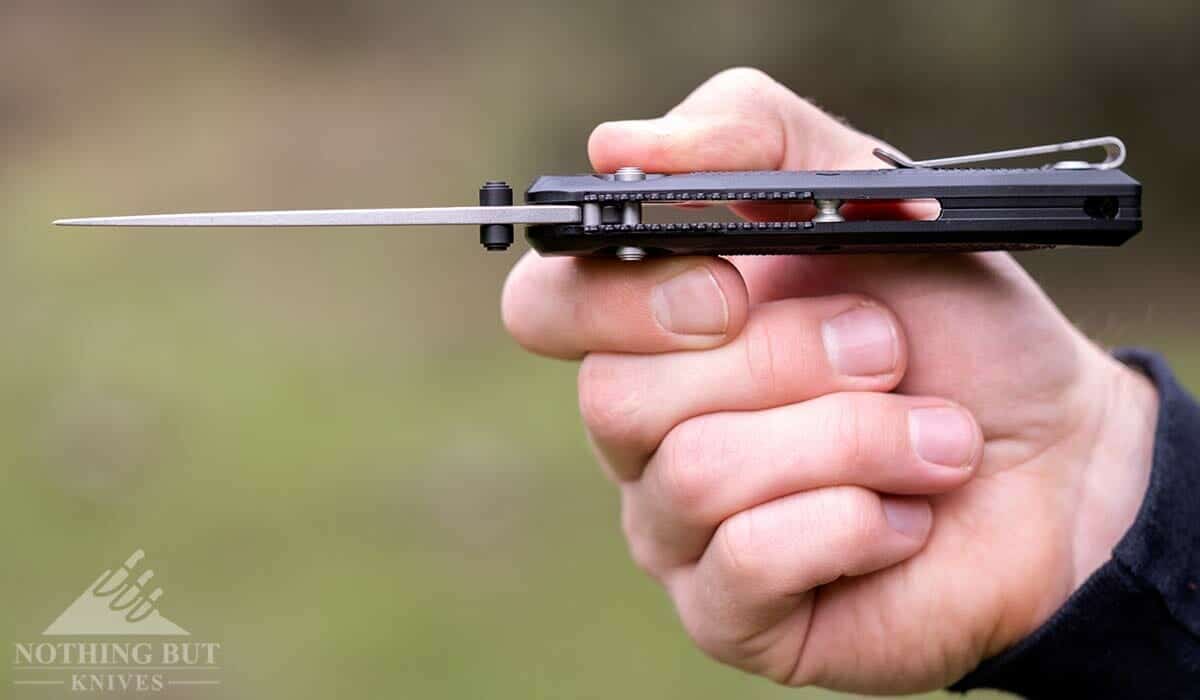
I’m actually a little unnerved by this because the lock up just doesn’t sound very strong. It hasn’t failed, but there’s no feeling from the lock bar sliding into place. I don’t know if this was intentional in the design. If Gerber was trying to make this feel streamlined they did a great job. But I’m so used to feeling the click of a locking mechanism shake through my fingers, and I never get that from the Sedulo.
Maybe that’s a good thing for some people. It does make it feel like a quiet knife, but for me it’s kind of unsettling.
In the Pocket
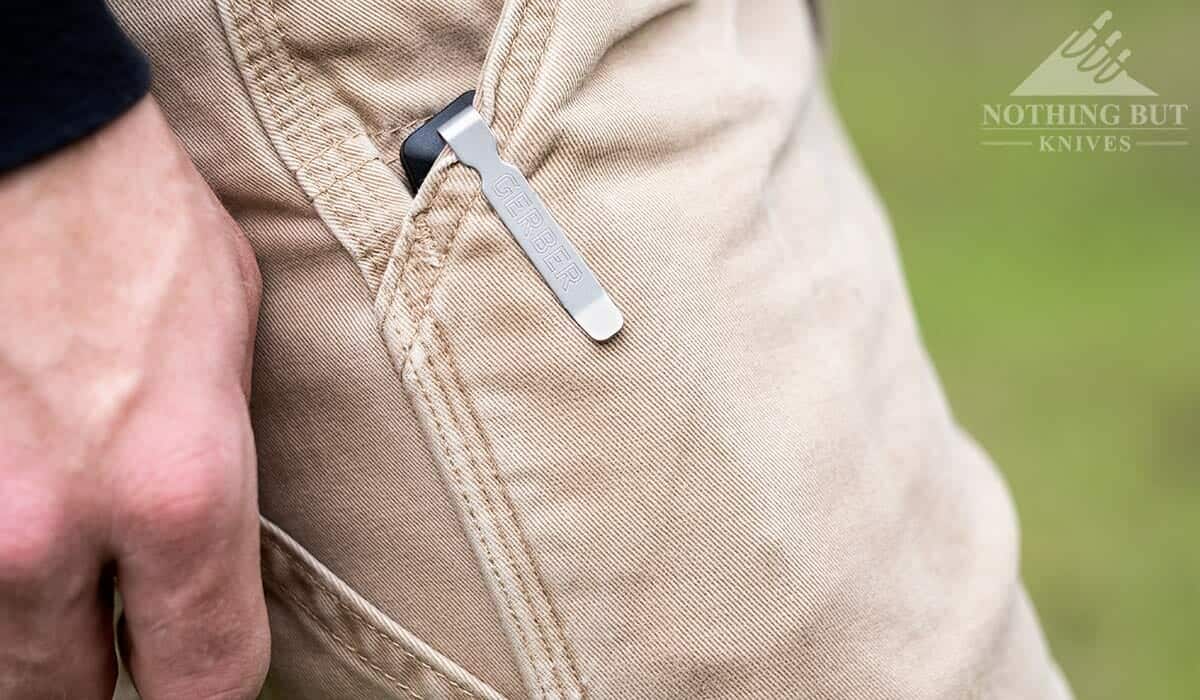
The Sedulo is pretty subtle for its size. The deep carry clip slips right over the pocket and the knife hugs surprisingly light to the corner. This is fairly wide for a pocket knife, so by all rights it should feel bulky, but the designers drew the lines on this really well. Even when I carry it in the same pocket as my phone it doesn’t really feel like I need more pocket space.
I also like how they’ve worked around grinding inserts for the pocket clip. Instead they’ve made the clip with a bit of a slope that guides the pocket lining into the deep carry section. So even though the clip is thick with a tight retention, it enters and leaves the pocket really smoothly, and doesn’t really feel like it tears at the pocket that much.
If it weren’t for that harsh bend creating a hotspot at the end of it, this would be a perfect pocket clip.
Comparison and Alternatives
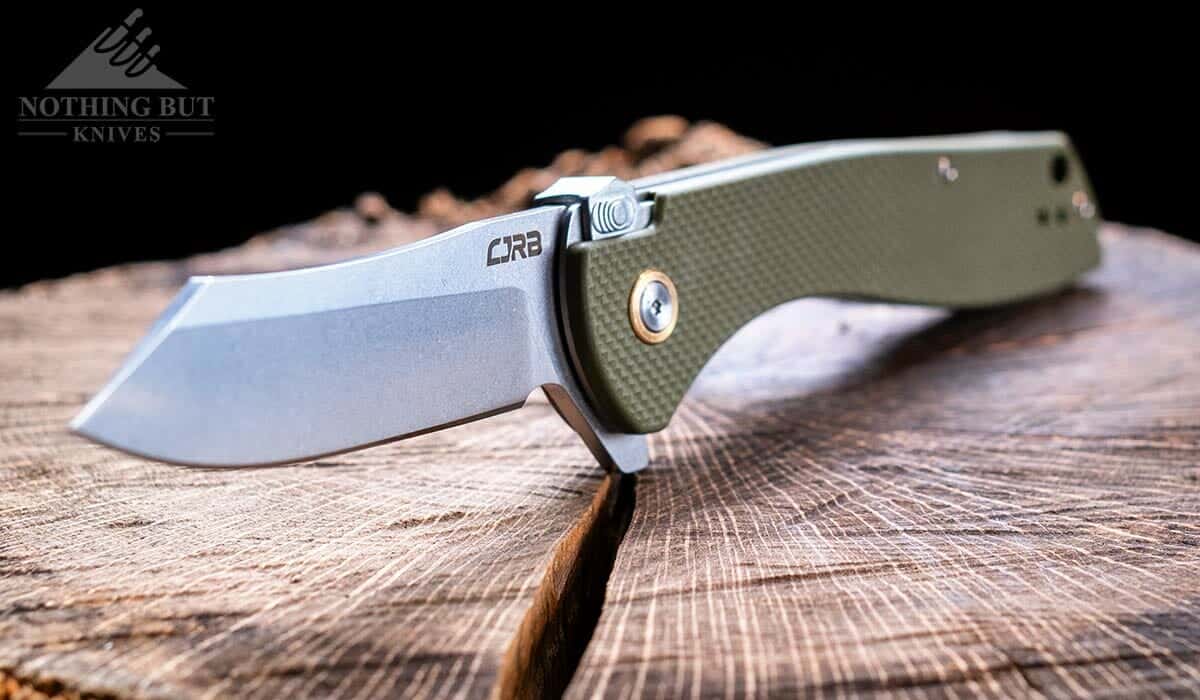
The obvious alternatives are the half dozen Benchmade knives that everyone compares the Sedulo to. I won’t try to argue that point, because I don’t have much personal experience with Benchmade. I would guess that if you want something with a nicer fit and finish and are willing to put down more money, the Benchmade 940 or the Bugout are probably better options for you.
If you want something with a slide lock that’s more wallet friendly, though, I could point you to the CJRB Kicker. It’s not a perfect knife, but CJRB (aka Artisan Cutlery) knows their stuff, and the edge and finish on this are pretty clean. Definitely worth the price if you don’t have anything against Chinese knives.
Also in the nice Chinese knife category is the Kizer Sheepdog. I already made a few comparisons between the Sheepdog and the Sedulo because they have similar grinds. They cut in very similar ways, even though they are completely different otherwise. And while the Sheepdog blade feels a little more unwieldy, it does cut a lot smoother than the Sedulo.
Conclusion
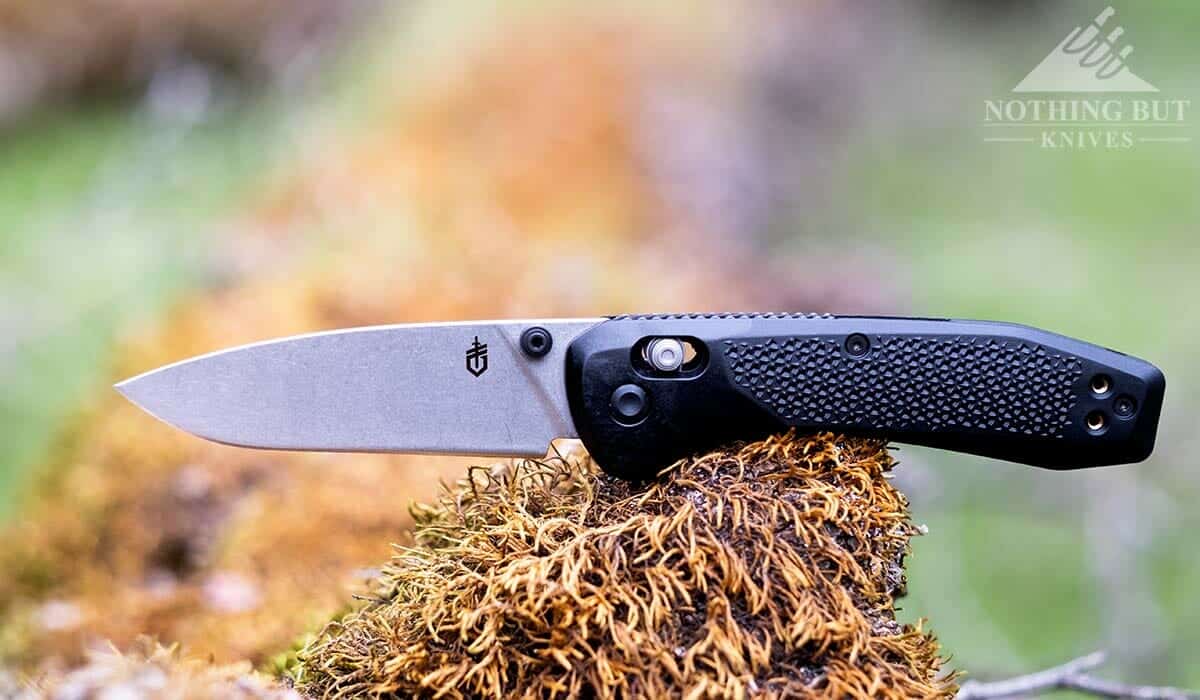
I find myself wanting to like this knife very much. I like the handle despite the cheap feeling of the FRN, I like the balance of it even though it should be too blade heavy with the thickness of the blade stock, and I even like the slide lock if for no other reason than it adds a heightened fidget factor.
It’s also good as a hard-use knife. Between the comfortable handle, the pocket ergonomics, and the wide flat grind on a famously hard steel, the Sedulo is a stubborn workhorse, and I would stand behind it to the end of the world if it would just cut like a normal knife.
But the edge is bad enough to be a deal breaker. If it weren’t for the S30V handle I would just sharpen the thing up myself, but it takes a lot less time to pick up my CRKT Shenanigan or Kizer Sheepdog and just use that. If you have the patience to clean up the edge yourself, then by all means pull the trigger on this knife, because that edge is the only thing holding it back. To everyone else I would say wait until Gerber releases a new version after they’ve ironed out their American manufacturing a little more.

It’s always disappointing to receive an edge that’s not up to par, but S30V is easily handled by any of the diamond abrasives that have been on the market for at least 20 years now.
That’s true if you already have a little experience sharpening, but S30V is nowhere near as easy to handle as Gerber’s 420H. Even given an ability to sharpen it easily, though, the grind on mine was uneven, which just isn’t an acceptable thing to see at this price range.